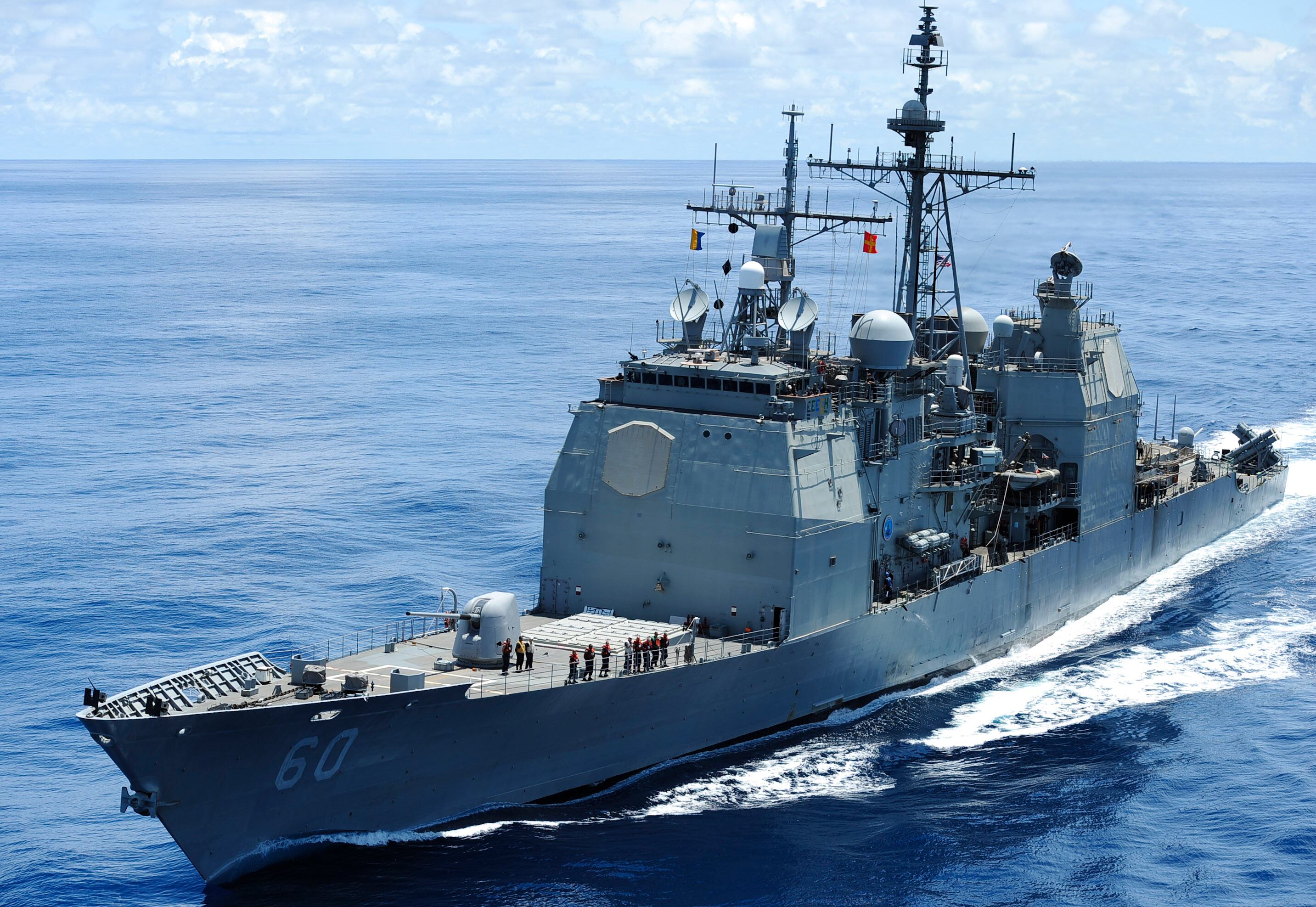WASHINGTON ―― The Navy’s oldest cruisers have a friend in Congress.
The influential head of the House Armed Services’ Seapower and Projection Forces Subcommittee is calling on the Navy to enter its oldest 11 cruisers into a service-life extension program rather than retire them at the end of their 35-year hull life in the coming years.
Defense News recently reported that the Navy was planning to decommission the oldest 11 cruisers starting in 2020 at a rate of two per year. The newest 11 cruisers are currently being rotated through a lay-up and modernization program that will keep them in the fleet until the late 2030s.
“Instead of discussing the decommissioning of cruisers, we need to spend more time discussing the maintenance, modernization and service-life extension of all twenty-two cruisers,” said Virginia Republican Rep. Rob Wittman, the head of the HASC Seapower and Projection Forces subcommittee, in a statement to Defense News.
Wittman, who along with Mississippi Republican Sen. Roger Wicker is spearheading the effort in Congress to grow the fleet to 355 ships, said modernizing and refitting the oldest cruisers will help get the Navy to that number.
“These assets are vital in reaching our goal of a 355-ship Navy, and they are important assets in our Carrier Strike Group construct,” he said.
RELATED

Wittman said that Naval Sea Systems Command is examining ways to get the ships through a service-life extension program.
Navy analysts broadly believe that decommissioning the oldest cruisers is a mistake, given the demand for ships equipped with their high-powered radars and biggest-in-the-fleet vertical launch system magazines. The cruisers come equipped with 122 VLS tubes, vice the destroyers which pack 96 tubes.
Bryan Clark, a retired submarine officer and analyst with the Center for Strategic and Budgetary Assessments, said entering the cruisers into a SLEP is the right idea, but along with that would have to come more careful use of the aging hulls.
“I think extending the service life of the cruisers is a good idea, as long as they are judicious about what they do with them moving forward,” Clark said. “Let’s not spend the money to overhaul them, then burn them up on low-end exercises or theater security cooperation missions.”
The Navy should put the older cruisers through hull, mechanical and electrical upgrades and save them for area air defense for carrier strike group operations instead, Clark argues. That would relieve the strain on the other cruisers and destroyers, which are in increasing demand as the ballistic missile defense mission becomes ever-more important.
The cruisers Bunker Hill and Mobile Bay will both be decommissioned in 2020 if current plans stand. Then Antietam and Leyte Gulf in 2021; San Jacinto and Lake Champlain in 2022; Philippine Sea and Princeton in 2024; Normandy and Monterey in 2025; and Chancellorsville in 2026.
The cruisers, which function as the air-defense commander in the carrier strike group, are commanded by full-bird captains and are the closest thing to a modern battleship in the Navy’s inventory.
The Navy is currently executing what’s known as the 2-4-6 plan, a compromise hashed out between Congress and the Navy to keep at least 11 cruisers in the fleet to run shotgun on the air defense of the 11 carriers in the fleet into the 2040s.
The 2-4-6 plan calls for two ships at a time to be sidelined for no longer than four years and that no more than six ships will be in this inactive status at one time.
According to the schedule obtained by Defense News, the last cruiser, the Cape St. George, would leave the fleet in 2038, with 40 years in active service, accounting for the four-plus years it will have spent in what’s known as “phased modernization.”
Some analysts worry about the loss of VLS tubes in the fleet, arguing that in a conflict with a near-peer competitor like Russia and China, ships need to have as many missiles as possible because potential adversaries will seek to overwhelm the Navy’s Aegis combat system and defenses with massed missile strikes. The strategy would be to make the escort ships run out of missiles to defend its aircraft carrier, then strike at the biggest weapon in the Navy’s arsenal.
A one-for-one swap of the 11 cruisers with new destroyers would reduce the Navy’s available VLS real estate by nearly 300 tubes. But what’s unclear is how, for example, the new Virginia Payload Module and a new guided-missile frigate program might offset the reduced number of cells currently being toted around by cruisers.
What is crystal clear is that there is no shortage of demand for the Navy’s VLS capability, especially as missions such as ballistic missile defense become increasingly important and put an ever-larger strain on the Navy’s surface ships.
The Navy has 34 ballistic missile defense-capable ships (32 if you subtract the two ships that are currently inoperable due to collisions over the summer). The Navy proposes to keep upgrading and extending the life of the destroyers in its inventory to cover its BMD missions, which can impact the Navy’s ability to use the ship in multiple roles because it has to stay in a certain location to ensure it can have a good shot at a ballistic missile shot by North Korea or Iran.
David B. Larter was the naval warfare reporter for Defense News.






